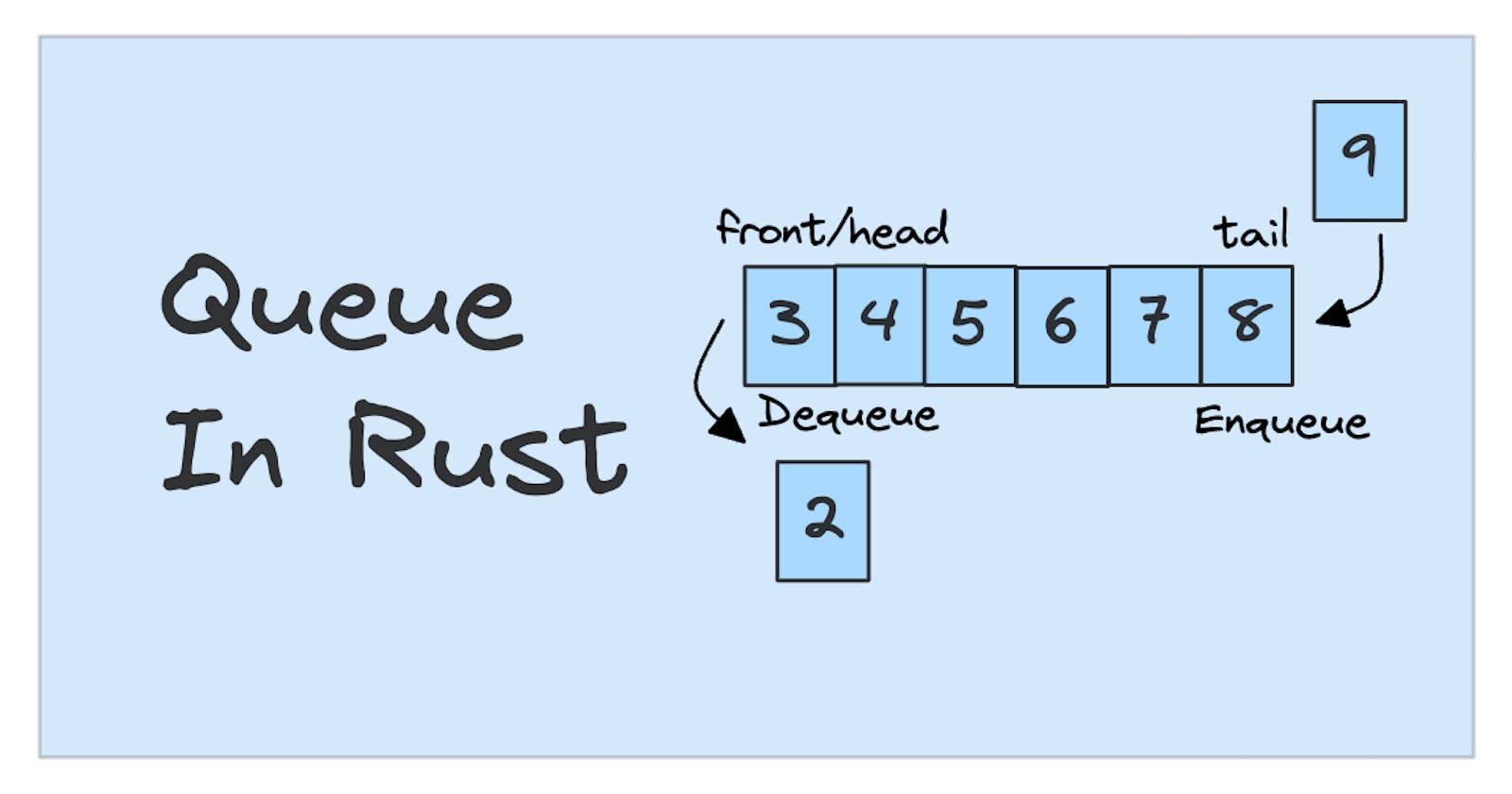Queues are fundamental data structures in computer science, often used for managing data in a first-in, first-out (FIFO) manner.
Before diving into the implementation details, let's briefly discuss what queues are and how they work.
Queue
A queue is a collection of elements that supports two primary operations: enqueue and dequeue.
Enqueue method
Enqueue adds an element to the back of the queue,
Dequeue method
Dequeue removes and returns the front element of the queue.
Additionally, queues typically support operations like peek (to view the front element without removing it) and empty (to check if the queue is empty).
let's start by defining our structs
struct MyQueue {
queue: Vec<i32>,
}
Structs in rust are similar to interfaces in typescript.
impl is used to define implementation on our struct type MyQueue
impl MyQueue {
// Constructor for creating a new empty queue
fn new() -> Self {
MyQueue { queue: Vec::new() }
}
}
new(): This method serves as the constructor for the MyQueue struct. It initializes an empty vector to store the elements of the queue.
push(x): This method takes an element x as input and adds it to the back of the queue by using the push method of the vector.
impl MyQueue {
fn new() -> Self {
MyQueue { queue: Vec::new() }
}
fn push(&mut self, x: i32) {
self.queue.push(x)
}
}
Example useable
let obj = MyQueue::new();
obj.push(x);
We can use the other vec method to implement dequeue, peek and other methods
here is the full code
struct MyQueue {
queue: Vec<i32>,
}
impl MyQueue {
// Constructor for creating a new empty queue
fn new() -> Self {
MyQueue { queue: Vec::new() }
}
// Method to add an element to the back of the queue
fn push(&mut self, x: i32) {
self.queue.push(x)
}
// Method to remove and return the front element of the queue
fn pop(&mut self) -> i32 {
self.queue.remove(0)
}
// Method to view the front element of the queue without removing it
fn peek(&self) -> i32 {
self.queue.first().unwrap().to_owned()
}
// Method to check if the queue is empty
fn empty(&self) -> bool {
self.queue.is_empty()
}
}
Similarly, we can create a generic version of the queue as well.
struct MyQueue<T> {
queue: Vec<T>,
}
impl<T> MyQueue<T> {
fn new() -> Self {
MyQueue { queue: Vec::new() }
}
fn push(&mut self, x: T) {
self.queue.push(x)
}
fn pop(&mut self) -> Option<T> {
self.queue.remove(0)
}
fn peek(&self) -> Option<&T> {
self.queue.first()
}
fn empty(&self) -> bool {
self.queue.is_empty()
}
}
Note: that peek and pop method return
Optiontype

